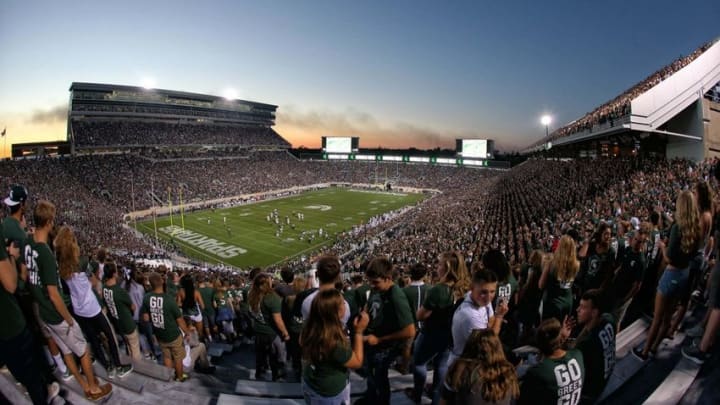Ara Parseghian wasn’t like other Notre Dame coaches. He wasn’t a Notre Dame graduate, nor was he Catholic. He played his college ball at Miami University in Ohio and was part of the 1948 and 1949 Cleveland Browns AAFC championship teams as a halfback and defensive back.
Parseghian followed Woody Hayes as the coach of Miami of Ohio from 1951 to 1955 before building Northwestern into a Big Ten power back when there were actually ten. One of his assistants at Northwestern in 1956 and 1957 was another Miami alum named Bo Schembechler.
Parseghian was a different kind of guy. He played mind games. A Sports Illustrated profile on him from 1959 claims that he “was credited by some writers as being the greatest psychologist in football since Knute Rockne.” Parseghian said, “psychology in football is more important than anyone believes, including the coaches.”
When coaching at Miami in 1954, he intentionally dressed his players in ragged uniforms for a practice the day before a road game against Indiana. His players were said to have “looked like a bunch of urchins, sandlot ragamuffins of such shoddy caliber that even Indiana could grow overconfident.” The next day, Miami won 6-0. He did the same thing when his Miami team played Northwestern the next season, and they won 25-16. Northwestern hired him the next year.
More from Detroit Jock City
- Tigers Sign Manager A.J. Hinch to Long-Term Extension
- Lions vs. Bears Week 14 Opening Odds Disrespect Detroit
- Former Tigers Celebrate Jim Leyland Hall of Fame Call
- This Pistons Team Could be the Worst in Detroit Sports History
- 4 Free Agents Tigers Should Sign During Winter Meetings
He had a disarming charisma—his players referred to him by his first name—and he was every bit as youthful and athletic as some of his players. He would sometimes join them in practice or coordinate a massive game of tag instead of making his team run sprints. While he was at Miami he hauled a heavy fire hose into place by himself when the home of a friend of his caught fire. One of his players at Notre Dame called him “a charismatic, all-seeing god on the high tower at practice.”
Parseghian came to a Notre Dame program in turmoil when he arrived in 1964. The Irish had finished 2-7 in 1963, Frank Leahy had been gone for a decade and the team hadn’t won a national championship since 1949. In his first year, Parseghian’s Irish went 9-1 and finished third in the AP Poll, with only a loss to Southern California in the last game of the season separating them from a national championship. Quarterback John Huarte won the 1964 Heisman Trophy. Notre Dame students would chant during the winter for their new coach to “stop the snow.” To which Parseghian allegedly responded by turned to his assistants and asking, “could I?”
“We all caught the fever with the first words Coach Parseghian said to the squad,” said linebacker and captain Jim Carroll, “He said, ‘We will win.’ And the way he is—intense, enthusiastic, confident—you sort of felt he wouldn’t allow anything else to happen.”
With one notable exception.
